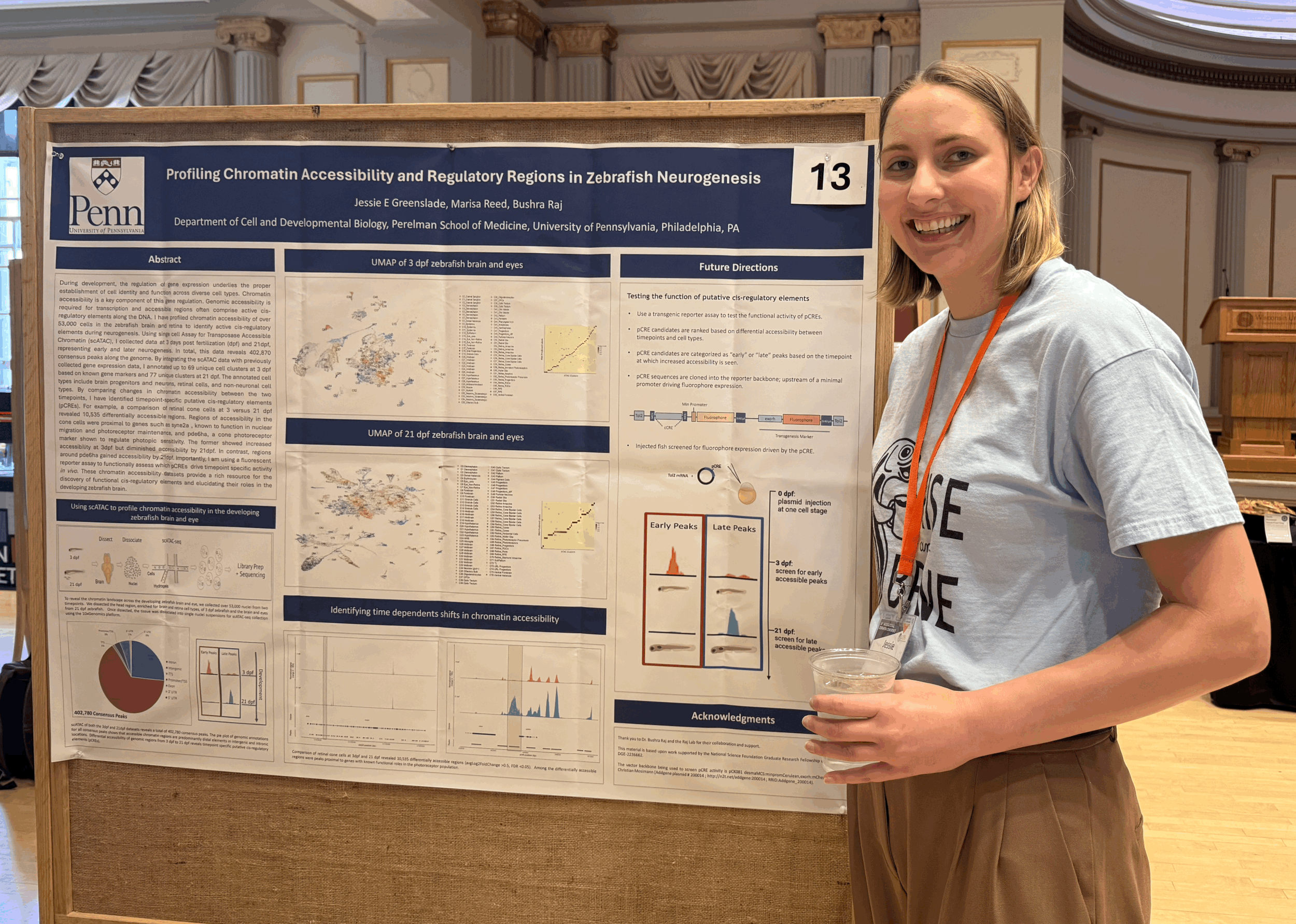
MAPPING BRAIN DEVELOPMENT
Cell and Developmental Biology
University of Pennsylvania
Overview
The vertebrate brain is generated from a small pool of embryonic progenitors that diversify into an expansive catalogue of cell types. However, the regulatory programs by which progenitors establish and expand this vast complexity is poorly understood. Our ultimate vision is to build molecular roadmaps of cellular diversification during brain development and regeneration. To achieve this, we are pursuing four major research areas:
i. How many brain cells are there and when do they appear?
ii. What transcriptional changes accompany neuronal diversification?
iii. How does genomic accessibility vary during neurogenesis?
iv. How do signaling inputs regulate lineage segregation?
These questions are important for understanding normal brain development as many of these pathways are disrupted in neurodevelopmental disorders and congenital birth defects. Our projects involve building and applying innovative tools that are designed to address the genetics underlying brain development using zebrafish as a model.
If you are interested in studying the regulatory code of neural cell fate decisions, engineering novel genetic and molecular tools, or using data science to study neurobiology, we have exciting, cutting-edge projects that are in need of ambitious minds and hands. Read more about our research and apply to join our talented team!
Lab News
Announcements
The Raj lab is actively seeking new members to join our group.
Rotation students are encouraged to email Bushra directly to discuss opportunities.
Postdoc candidates are also encouraged to email Bushra to check for openings.





